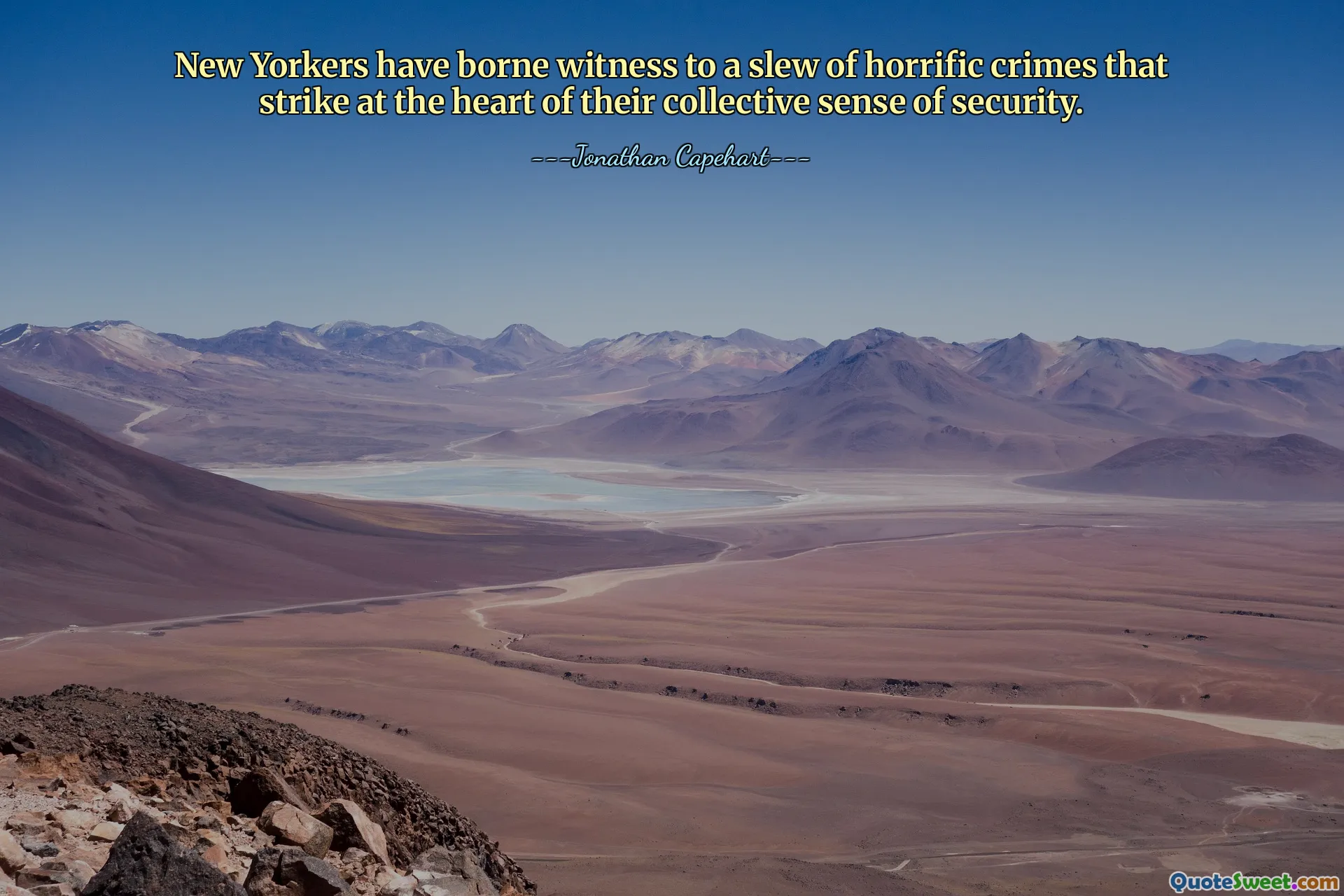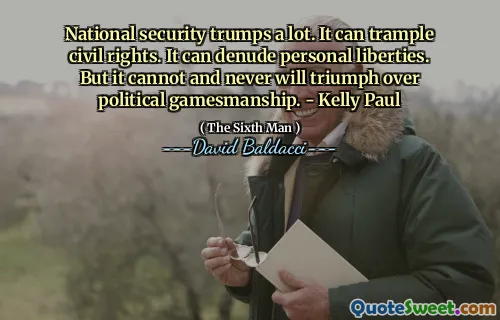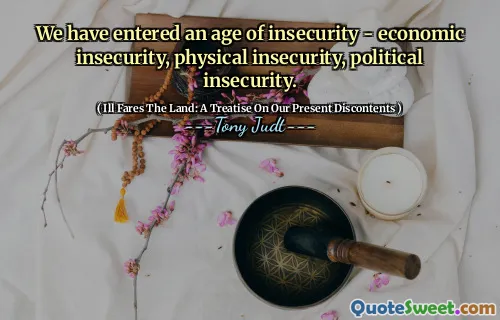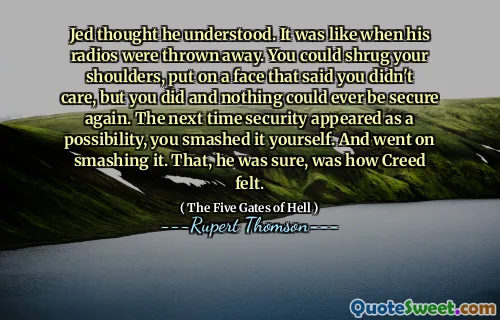
New Yorkers have borne witness to a slew of horrific crimes that strike at the heart of their collective sense of security.
The quote vividly captures the profound impact that recurrent acts of violence and crime have on a community's sense of safety and stability. Especially in a city like New York, known for its bustling streets and diverse populace, the consistent exposure to such tragic events can foster a collective sense of vulnerability and fear. Crime, particularly violent crime, erodes the foundational trust among residents—trust that their environment is safe and that their daily routines are protected. The psychological toll extends beyond individuals directly affected; it ripples through the community, generating heightened alertness, anxiety, and sometimes even desensitization. People may alter their behaviors — avoiding certain neighborhoods, withdrawing from social interactions, or feeling an increased sense of trepidation while navigating urban spaces. These reactions can influence everything from local policies to the social fabric of the city itself. The internal struggle becomes how a resilient city like New York maintains its identity amidst continuous threats to safety. It invites reflection on what measures are necessary to restore confidence, whether through enhanced law enforcement, community engagement, or other social programs. Ultimately, the quote underscores the importance of collective resilience and the ongoing challenge of ensuring that the sense of security is not just a fleeting illusion but a genuine reality for all residents. Cities are dynamic entities evolving through their shared experiences, and how they respond to and recover from such attacks on their collective sense of safety is crucial in shaping their future stability.











